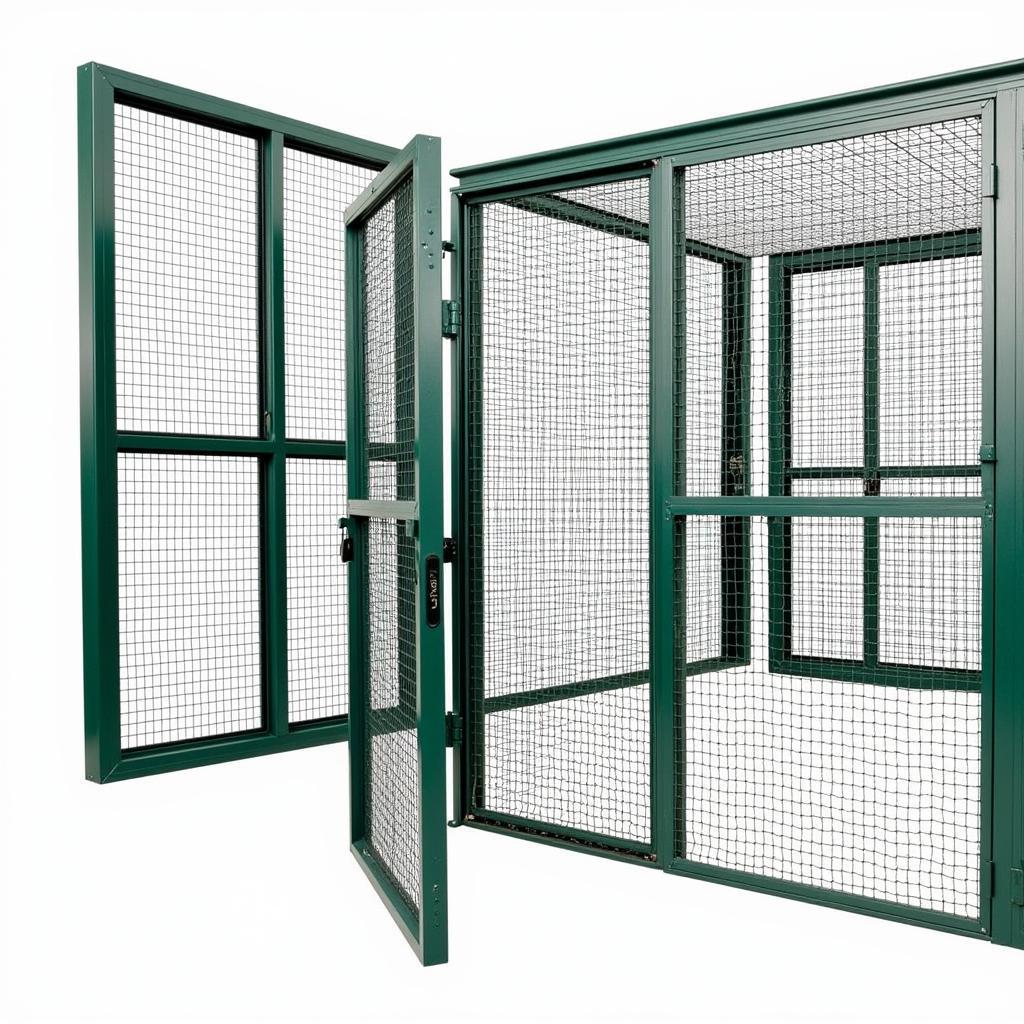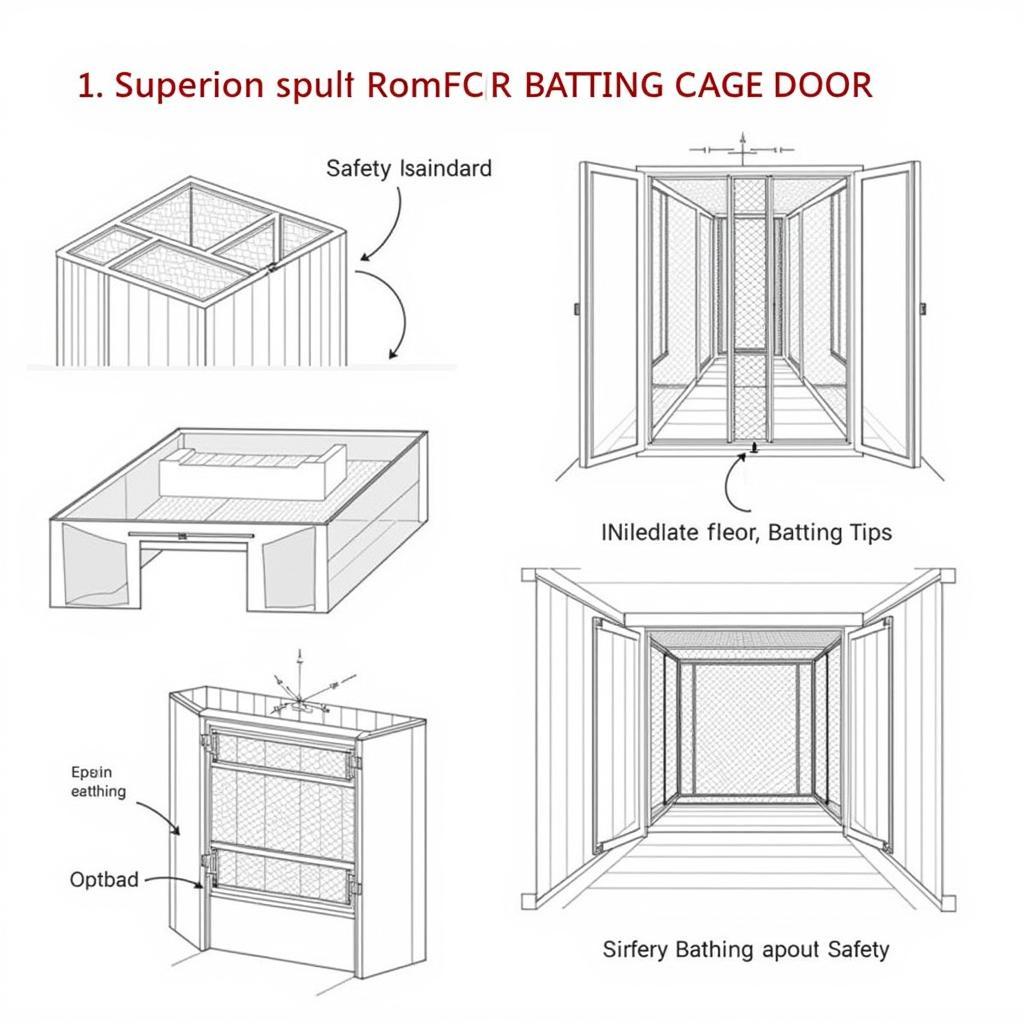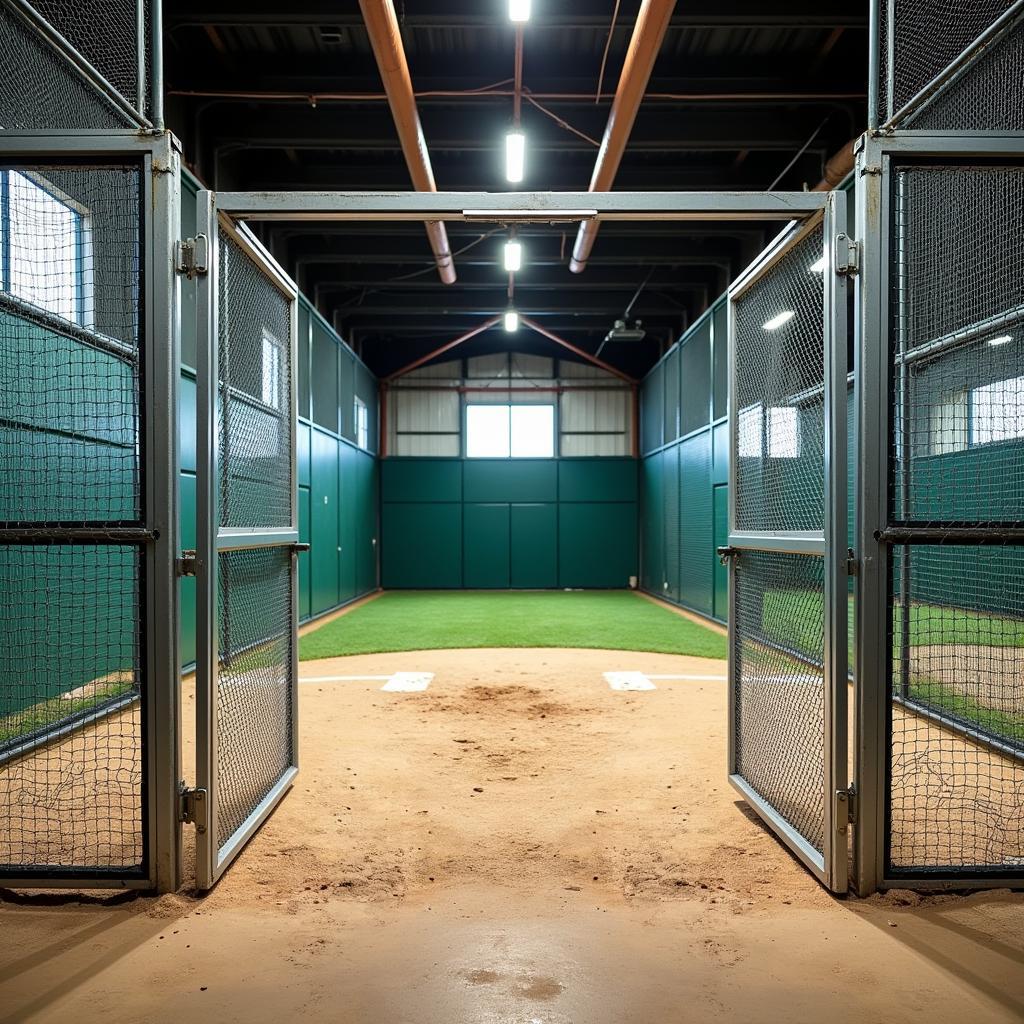Choosing the Right Batting Cage Door: A Complete Guide
October 16, 2024When building or upgrading your batting cage, it’s easy to get caught up in the details of the netting, the pitching machine, and the turf. However, one crucial element that often gets overlooked is the Batting Cage Door. Choosing the right door is essential for convenience, safety, and the overall functionality of your training space.
 Different Types of Batting Cage Doors
Different Types of Batting Cage Doors
Understanding Your Batting Cage Door Options
The market offers a variety of batting cage doors designed to meet different needs and preferences. Here’s a breakdown of the most popular types:
1. Sliding Doors
As the name suggests, these doors slide open and closed, typically on a top-mounted track system. They’re known for their ease of use and space-saving design, making them a popular choice for both commercial and residential batting cages.
Pros:
- Space-efficient: Ideal for tight spaces where a swinging door isn’t feasible.
- Easy to operate: The sliding mechanism allows for effortless opening and closing.
- Durable: Built to withstand frequent use, especially with robust track systems.
Cons:
- Track maintenance: The track system may require occasional cleaning and lubrication.
- Limited opening width: The opening is limited to the width of a single door panel.
2. Hinged Doors
Hinged doors are the more traditional option, swinging inward or outward to provide access. They offer a wide, unobstructed opening, making them suitable for larger batting cages or those with frequent equipment movement.
Pros:
- Wide opening: Provides ample space for moving equipment in and out.
- Familiar operation: Easy to use and understand, similar to a standard door.
- Cost-effective: Often less expensive compared to sliding or retractable options.
Cons:
- Swing space required: Needs clearance for the door to swing freely.
- Potential obstruction: The open door can obstruct the batting cage area if not planned well.
- Less durable hinges: Hinges can wear down over time with heavy use.
3. Retractable Netting Systems
For a truly seamless and versatile option, retractable netting systems are gaining popularity. These systems feature netting that retracts and disappears into a housing unit when not in use.
Pros:
- Maximum flexibility: Offers a completely open space when the netting is retracted.
- Aesthetically pleasing: Provides a clean and unobstructed look when open.
- Customizable: Can be tailored to fit various batting cage sizes and shapes.
Cons:
- Higher cost: Generally, the most expensive option among batting cage doors.
- Installation complexity: Requires professional installation for optimal performance.
- Maintenance: Regular maintenance is necessary to ensure smooth operation.
 Proper Installation of a Batting Cage Door
Proper Installation of a Batting Cage Door
Factors to Consider When Selecting a Batting Cage Door
Choosing the right batting cage door involves considering several factors beyond the door type itself:
1. Frequency of Use
- High-traffic facilities: Sliding or retractable doors offer durability and ease of use for frequent openings and closings.
- Occasional use: Hinged doors can be a cost-effective choice for home batting cages.
2. Space Constraints
- Limited space: Sliding doors maximize space efficiency by eliminating swing radius needs.
- Ample space: Hinged doors are suitable when space isn’t a major concern.
3. Budget
- Cost-conscious: Hinged doors are generally the most budget-friendly option.
- Mid-range budget: Sliding doors offer a balance of affordability and convenience.
- High-end investment: Retractable netting systems are ideal for those seeking top-tier functionality and aesthetics, though they come at a higher price point.
4. Safety
- Secure latching mechanisms: Ensure the door securely latches to prevent accidental openings.
- Visibility: Choose doors with transparent panels or strategic placement within the netting to allow clear visibility both inside and outside the cage.
5. Durability and Maintenance
- Material selection: Opt for weather-resistant materials like galvanized steel or aluminum for the frame and hardware.
- Low-maintenance options: Consider self-lubricating components and weather-resistant finishes to minimize upkeep.
Installation and Maintenance Tips
Proper installation and maintenance are crucial for ensuring the longevity and performance of your chosen batting cage door. Here are some key tips:
- Professional installation: Especially for sliding and retractable systems, professional installation ensures proper alignment and functionality, reducing the risk of future problems.
- Regular cleaning: Keep the door track (for sliding doors) and surrounding area free from dirt, debris, and obstructions.
- Lubrication: Regularly lubricate hinges, rollers, and other moving parts to ensure smooth operation and prevent wear and tear.
- Inspection: Periodically inspect the door for signs of damage, wear, or loose hardware, addressing any issues promptly.
 Creating a Safe and Functional Batting Cage Environment
Creating a Safe and Functional Batting Cage Environment
Conclusion
Choosing the right batting cage door might seem like a minor detail, but it can significantly impact your training experience. By understanding the different door types, considering your specific needs, and prioritizing safety and durability, you can make an informed decision that enhances the functionality, convenience, and longevity of your batting cage.